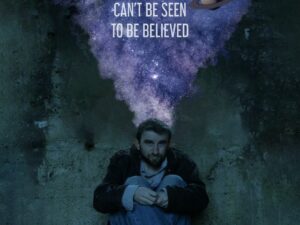
Religion and the Supernatural in Science Fiction and Fantasy
April 26, 2017
Lab 027 from 4:00 to 6:00
Hosted by the Centre for Science Fiction and Fantasy
Free to attend for all staff and students. Wine and drinks provided!
*
The Classical Pantheon in Children’s Fantasy Literature
Prof. Sarah Annes Brown
Children’s literature often reveals both a preoccupation with and an antipathy for the authority of Greek gods. For example in Hilda Lewis’s Nesbit-inspired time-travel adventure The Ship that Flew (1939) the children would much rather visit Asgard than Olympus.
“Tell us about it Pete,” she said.
“Well, it’s a book of old stories. About gods and things. Not Zeus and his crowd—a much better lot. Odin and Frigga. And Thor. And—Frey.”
Hilda Lewis, The Ship That Flew (1939)
Why might this be? An examination of the fault line between children’s fantasy and the classics reveals a recurring preoccupation with power—both the Greek gods themselves and the classical tradition of which they form part are invested with conspicuous authority. Writers use a range of methods to call into question both the cultural dominance of the classics and the power and majesty of the gods themselves. When fantasy writers do turn to the Olympians for inspiration, the pantheon is often treated with ambivalence, irony, even resentment. This paper will explore shifts in attitudes towards the classical pantheon in children’s fantasy literature by writers such as E. Nesbit, C. S. Lewis, Diana Wynne Jones and Rick Riordan.
When Worldviews Collide: Stanislaw Lem and Andrei Tarkovsky
Prof. Rowland Wymer
Stanislaw Lem’s Solaris (1961) is regarded as one of the undisputed classics of modern science fiction, ‘one which embodies all the potentialities of the genre to which it belongs’. The impossibility of understanding or contacting the alien Ocean, which seems able to materialise the dreams and memories of its human observers, exemplifies the cognitive limits of human reason: ‘Where there are no men, there cannot be motives accessible to men.’ Tarkovsky’s 1972 film adaptation has an equally classic status within cinematic SF, yet this was achieved not by being faithful to the novel but by bending it to serve a very different and more religious worldview. According to Lem, ‘What was important for Tarkovsky in the film left me quite indifferent and vice versa’. In addition to exploring some of the significant differences between novel and film, I want to look at ways in which they are much more closely aligned than either Lem or Tarkovsky would admit. The theme of the unknowable ‘Other’ is as much a moral and religious theme as it is a scientific and methodological one and the collision of worldviews is not a purely destructive one.


